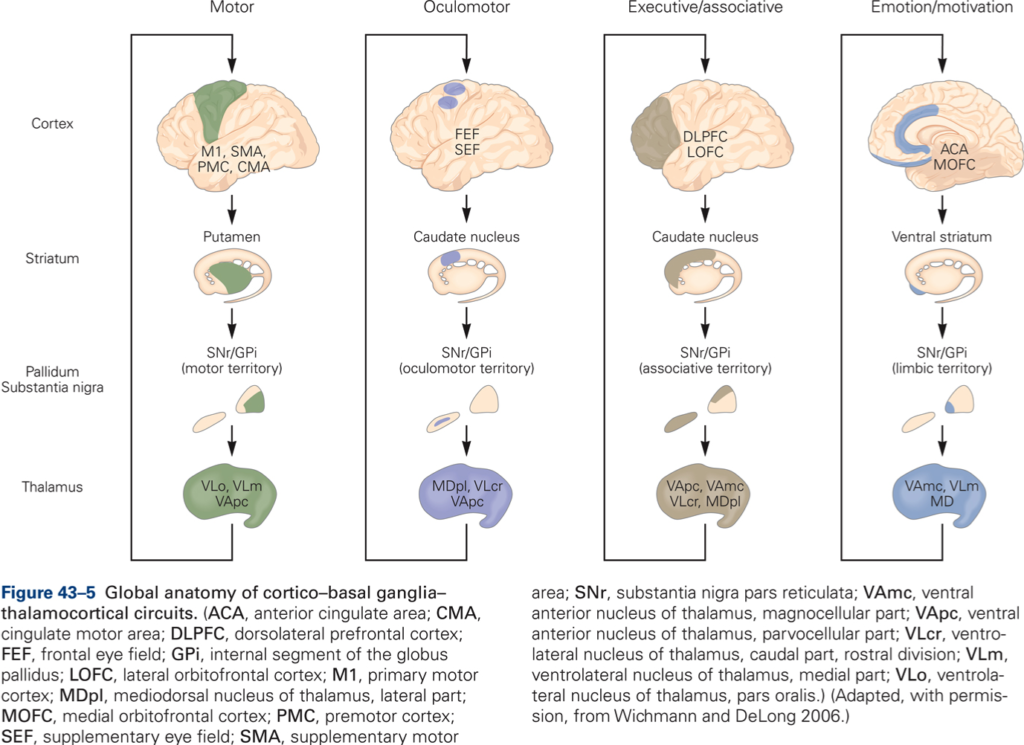M6 | Integrative action of the sensorimotor system – Cerebellum & Basal ganglia
Functional Organization of the Basal ganglia
The basal ganglia (BG) are a group of five anatomically connected and functionally related nuclei: caudate, putamen, globus pallidus (internal, GPI & external, GPE), subthalamic nucleus (STN), substantia nigra pars reticulata (SNPR), and substantia nigra pars compacta (SNPC). They receive input from all areas of cerebral cortex and link this input via relays in the thalamic nuclei to prefrontal, premotor and motor areas of cerebral cortex.
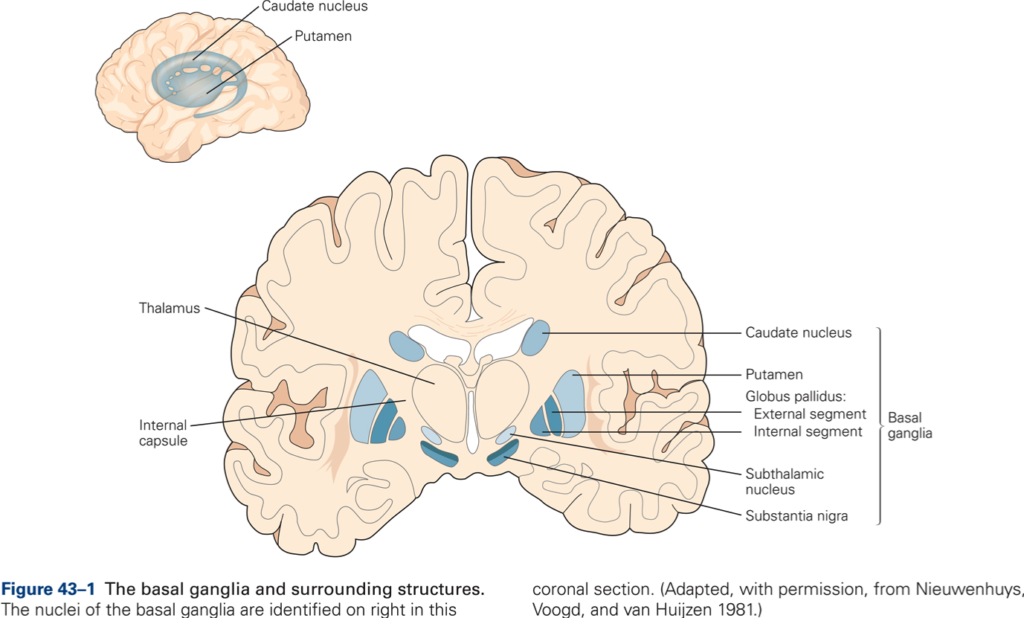
Basic circuitry
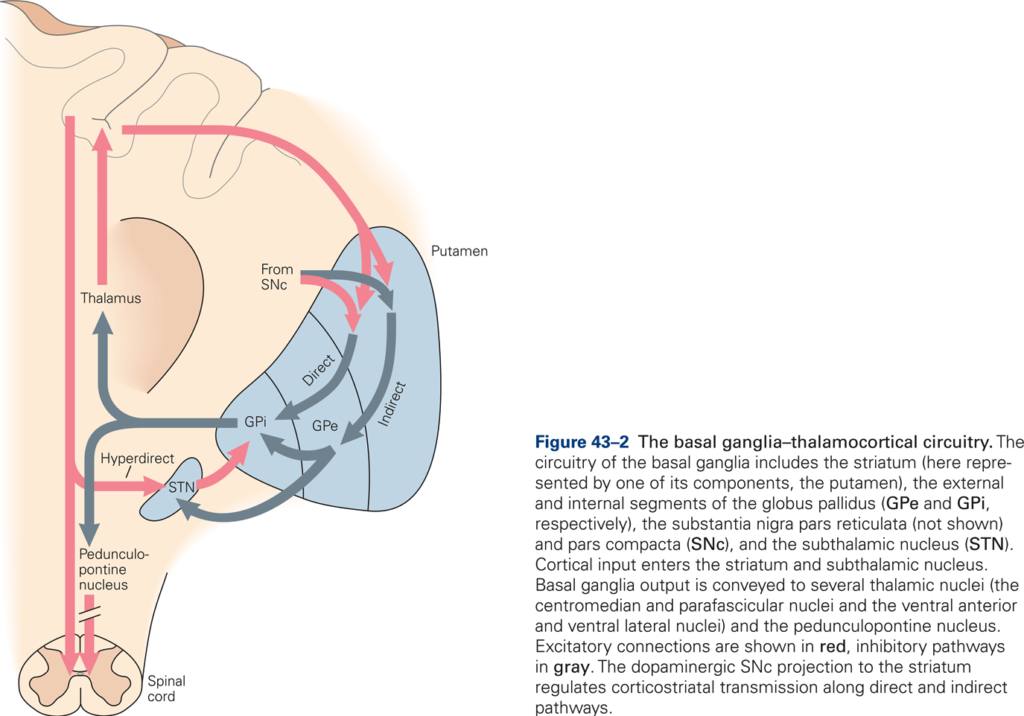
Caudate and putamen (striatum or neostriatum) are input nuclei. The putamen receives somatotopically organized input from primary motor and somatosensory cortices and from the premotor areas whereas the caudate nucleus receives input primarily from association areas of cerebral cortex. Therefore, the circuits through the caudate are involved more in higher mental functions and cognitive aspects of movement whereas the circuits through the putamen are involved more directly with the control of movement.
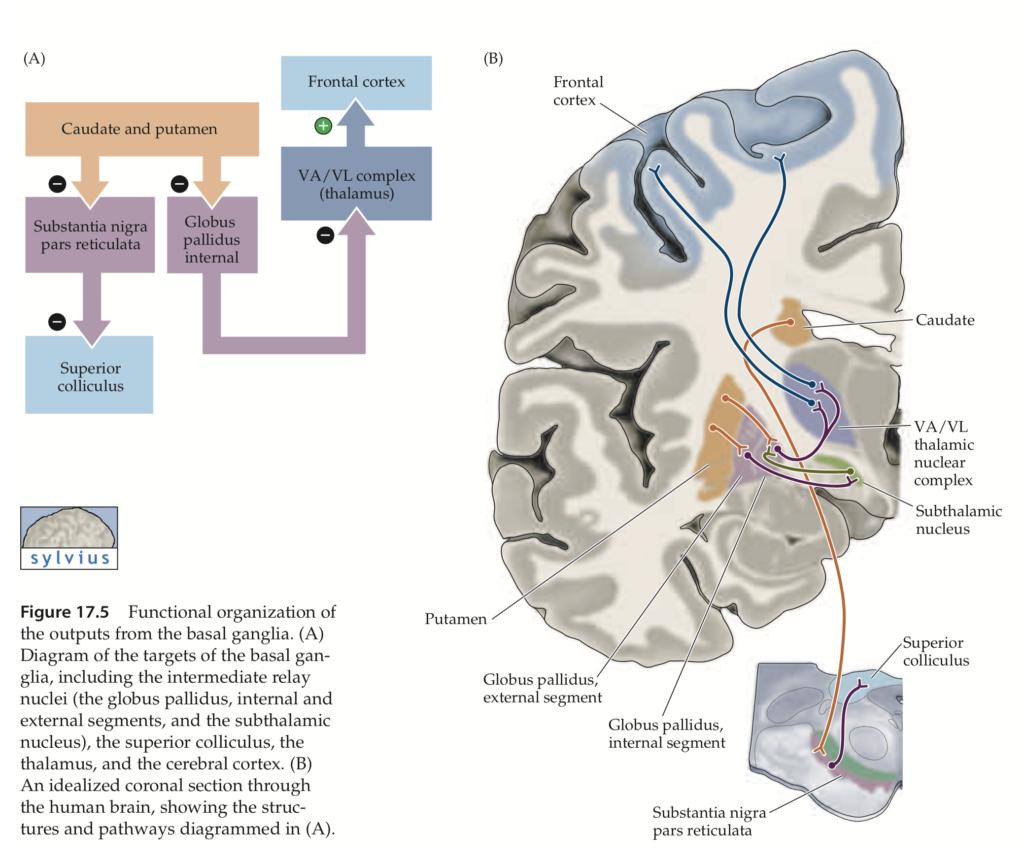
GPI and SNPR are the major output nuclei of the BG. Connections between input and output nuclei of the BG are organized the same for each of the major circuits through the BG. A direct pathway is distinguished from an indirect pathway. In the direct pathway, excitatory cortical input to the striatum produces disinhibition (i.e. two inhibitory synapses in series) of the thalamus, thus produces excitation at the cortex. The indirect pathway has the opposite effect.
Functional organization
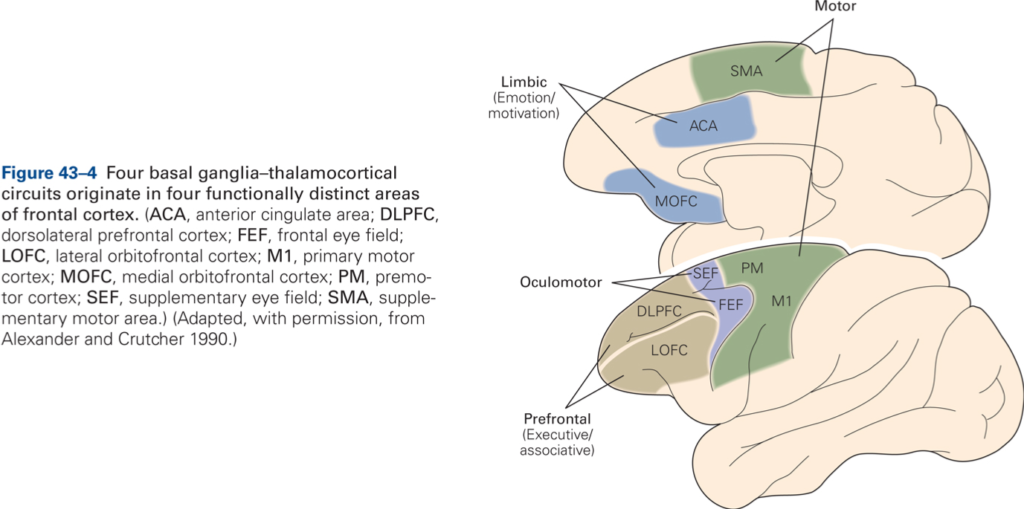
The BG consist of multiple parallel circuits in which the flow of information is kept segregated. Thus the BG process information in parallel rather than primarily integrate information from large parts of cerebral cortex.
Motor circuit
Sensorimotor areas (area 1-7) –> putamen –> GPI/SNPR –> VL thalamus –> SMA and PM
- Planning and execution of complex movement sequences.
- Planning and triggering self-initiated movements
- Organizing postural adjustments
- Selectively facilitates some movements while suppressing others (inhibit unwanted movements)
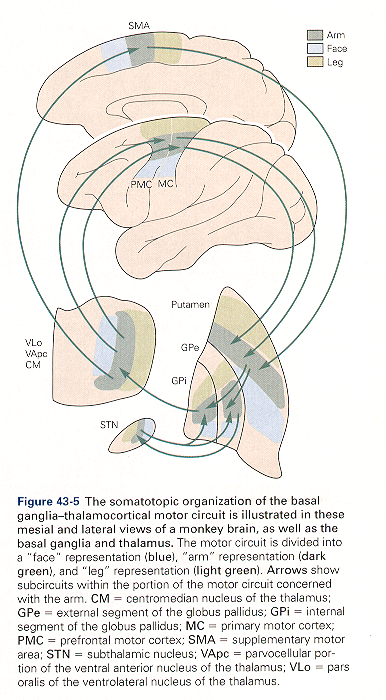
Oculomotor circuit
Frontal and Supplementary eye fields (FEF & SEF) –> caudate –> GPI & SNPR –> Thalamus (and Superior colliculus) –> FEF
- Disinhibition by BG output allows movements to occur (does not initiate movements). For example, inactivation of inhibitory action of SNPR does not cause discharge in superior colliculus (i.e. does not elicit eye movements) but releases SC cells from inhibition and, therefore, SC neurons are more likely to be activated by coincident inputs from other sources.
Prefrontal circuit
Prefrontal cortex –> caudate –> GPI/SNPR –> Thalamus –> prefrontal cortex
- Cognitive aspects such as memory triggered movements. Discharge of BG cells are related to remembered visual targets. Also this circuit is related to aspects of memory that are concerned with orientation in space.
- Ability to make changes in behavioral set (the general readiness and preparation for specific actions).
Limbic circuit
Limbic cortex –> caudate –> GPI/SNPR –> Thalamus –> limbic cortex
- Limbic association areas link motivation and emotions to the execution of movement.

